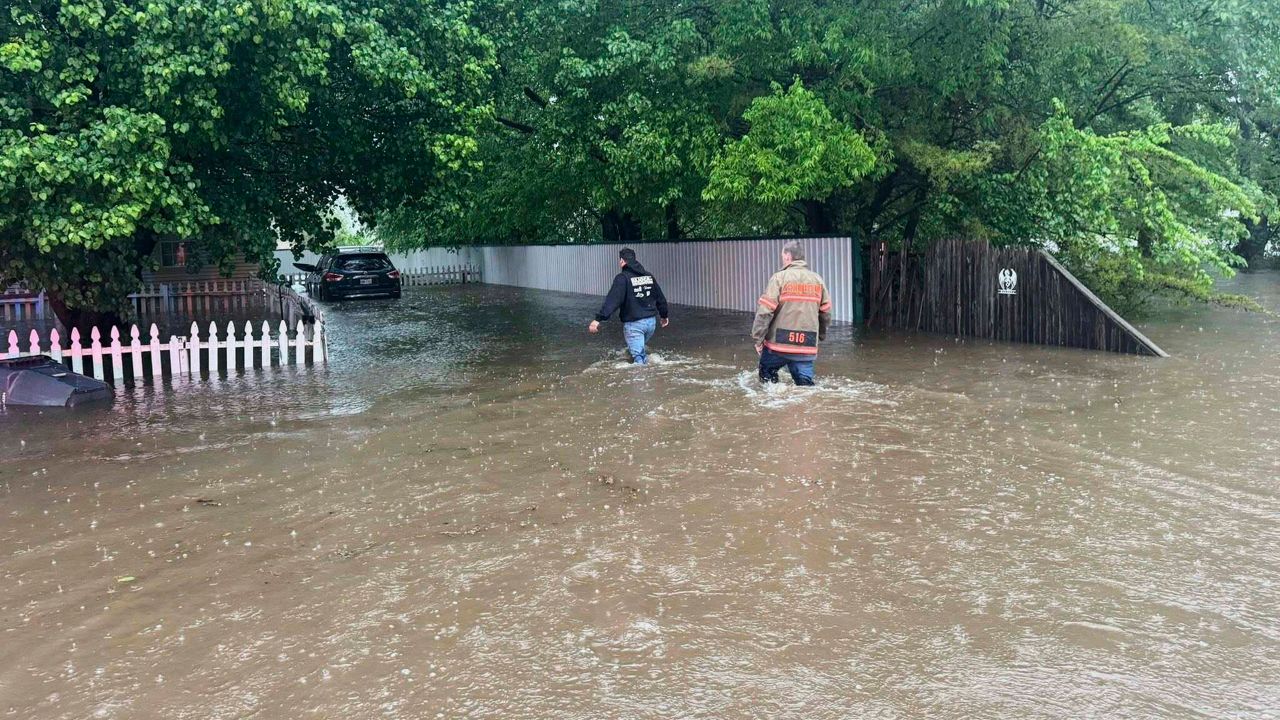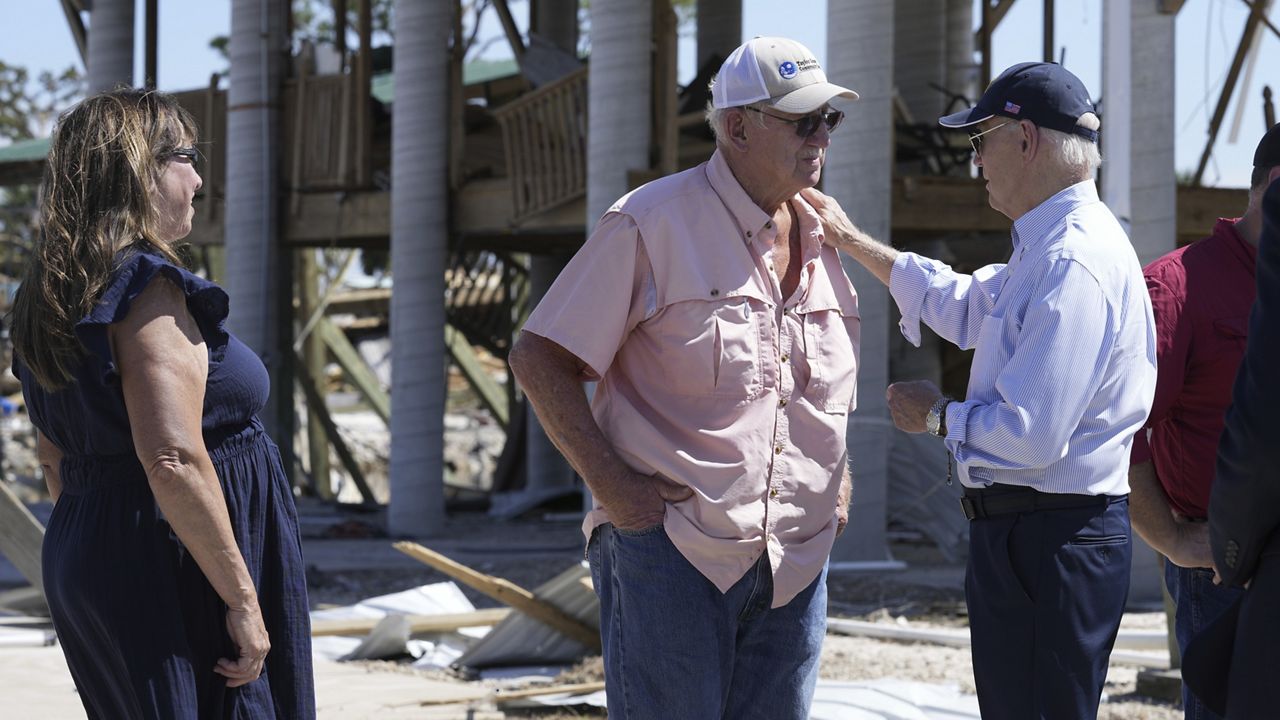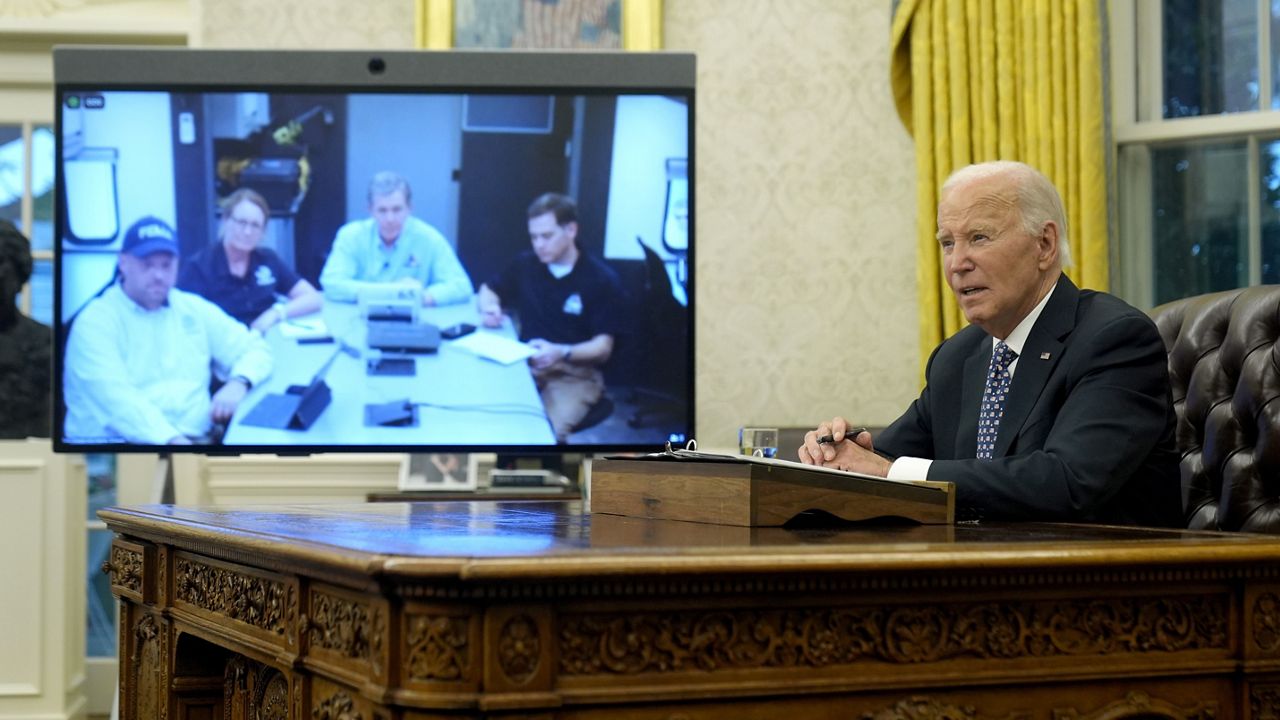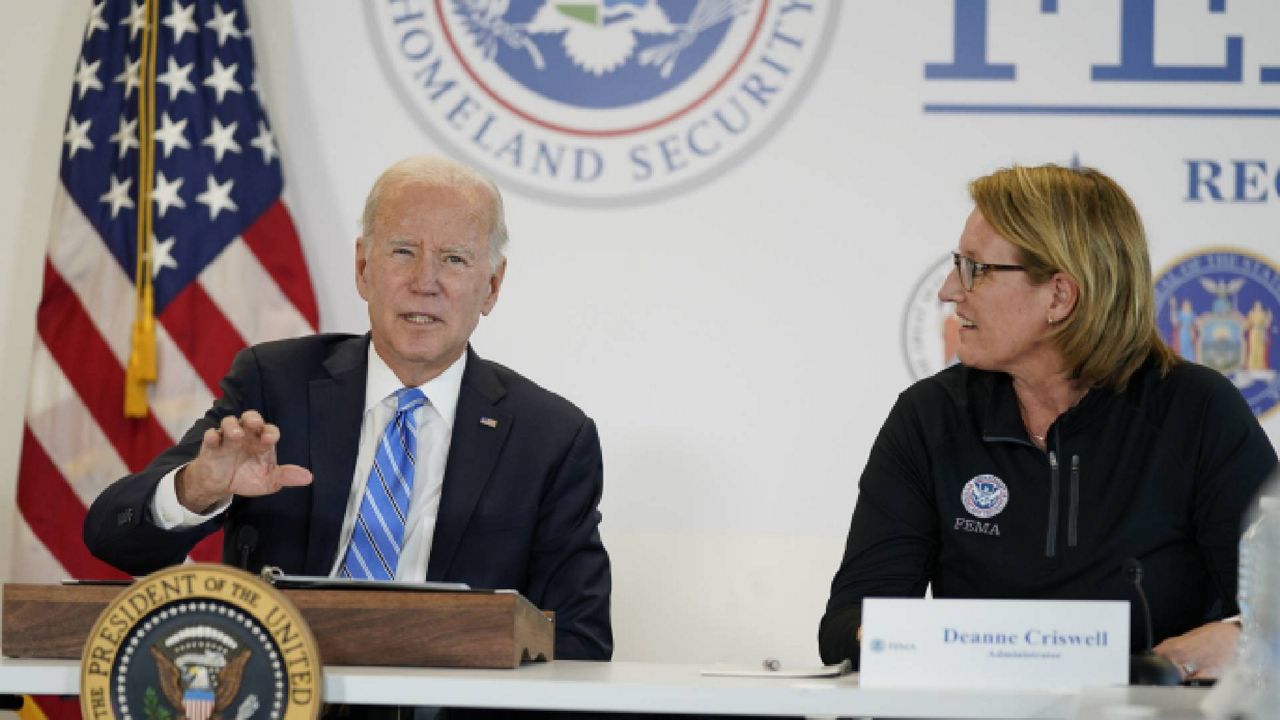WASHINGTON — President Donald Trump on Tuesday made clear he intends to eliminate the Federal Emergency Management Agency as it currently exists but not until after the hurricane season that kicked off just over a week ago.
The president revealed his plans for the agency, tasked with leading the federal response to disasters around the country, at a briefing with administration officials in the Oval Office about preparations for the hurricane and wildfire seasons just getting underway. Officials said the season is expected to be “above normal” for fires and see “higher than usual activity” for hurricanes.
Homeland Security Secretary Kristi Noem said FEMA, which falls under her department, has been training employees and pre-deploying resources. At the same time, she said she has been preparing governors to take over responsibilities themselves in seasons ahead as she declared the agency “fundamentally needs to go away as it exists.”
“So while we are running this hurricane season, making sure that we have pre-staged and worked with the regions that are traditionally hit in these areas, we're also building communication and mutual aid agreements among states to respond to each other so that they can stand on their own two feet,” Noem said.
Trump noted his desire, first expressed days into his return to the White House while touring damage from Hurricane Helene in North Carolina, to “wean off FEMA.”
Asked by reporters about when such a shift would take place, however, Trump said after the current season. Noem said the FEMA Review Council that Trump created shortly after his return to office to evaluate the agency’s future would lead the shift.
“Over the next couple of months, we'll be working on reforms and what FEMA will look like in the future as a different agency under the Department of Homeland Security to the president's vision,” the Homeland Security secretary said.
Trump said the way in which federal funding goes to states in the wake of disasters specifically would change, coming “directly” from the “president's office” instead of through FEMA. He said the federal government would be chipping in “less money” in general.
Hanging over the season are concerns that cuts to personnel and funds brought about by Trump’s wide-scale government downsizing campaign led by the U.S. DOGE Service could impact readiness and federal agencies’ abilities to respond.
In an interview with Spectrum News last week, Deanne Criswell, who served as the head of FEMA under former President Joe Biden, said she expects the agency to be “strained” this season following cuts.
“It is going to be harder because they’re going to be doing the same mission with less people,” she said. “They’ve lost some institutional knowledge.”
As far as funding, Office of Management and Budget Director Russell Vought said the primary federal account for federal disaster response — the disaster relief fund — has $13 billion, which is projected to last until the end of the fiscal year on Sept. 30.
In the wake of hurricanes Helene and Milton in the Southeast last year, Biden requested about $100 billion in emergency aid from Congress, which included about $40 billion for FEMA’s disaster relief fund. Congress eventually included the aid, with about $29 billion for the disaster relief fund, in a short-term government funding bill passed in December.
Despite the president’s stated intent to cut back on disaster funding for states, the White House requested about $26 billion in disaster relief funding in its budget request for the next fiscal year, an increase from the amount allocated in the current fiscal year. It also asked Congress for $2.9 billion for wildfire suppression efforts, slightly higher than the current year.
In terms of wildfire preparations, Agriculture Secretary Brooke Rollins touted a plan in response to an executive order signed by Trump to increase timber production in the U.S., which the administration argues will help manage fire risk by transporting hazardous fuels from forests to processing facilities.
Rollins also noted that the administration is at 96% capacity in terms of hiring firefighters.










